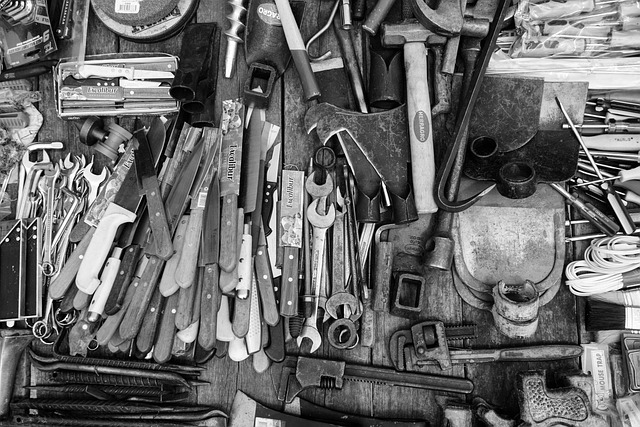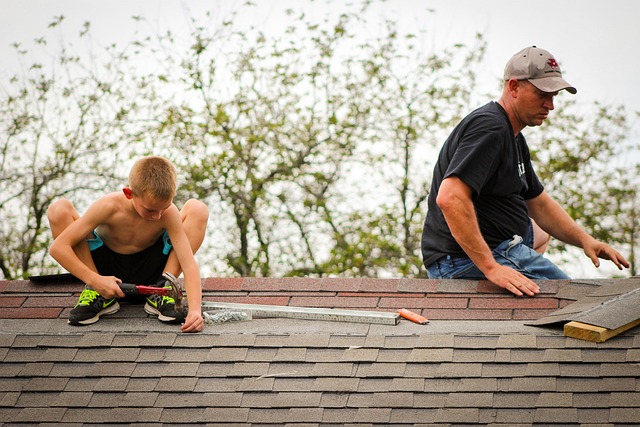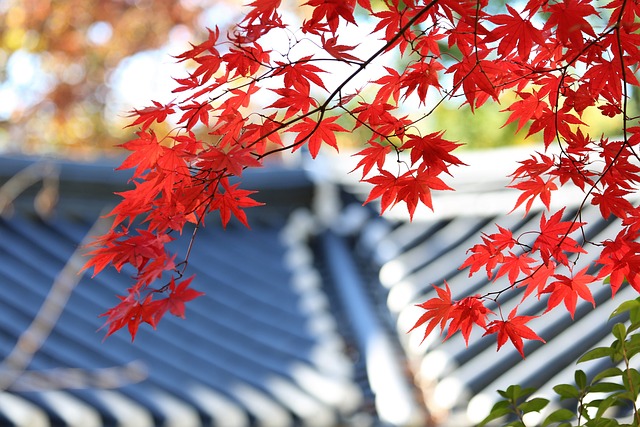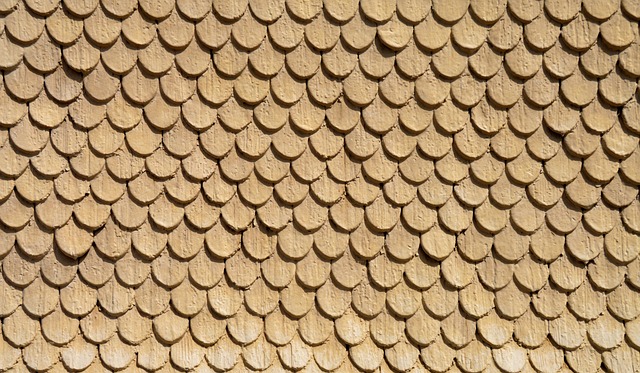Shingle roofs require timely maintenance due to weather damage, age-related issues, and potential structural risks. Signs of trouble include visible damage, blisters, and interior water stains. Regular inspections prevent costly emergency repairs. When replacing a shingle roof, hire licensed professionals with experience, positive reviews, and local knowledge. Material choices vary, from affordable asphalt to durable metal, each offering unique aesthetics and weather resistance, with pricing ranging from $5,000 to $15,000 or more. Annual maintenance, including inspections and debris removal, extends the roof's lifespan. DIY repairs are limited; complex tasks should be left to professionals for safety and warranty considerations.
“Looking to upgrade or repair your shingles? This comprehensive guide navigates the world of shingle roof replacement, addressing all your concerns. From understanding shingle damage – common issues and signs – to choosing the best contractors, this article offers a step-by-step process for repairs/replacements.
Discover exploring diverse materials and styles, budgeting tips, and maintenance secrets for longevity. We also answer frequently asked questions, ensuring you’re informed every step of the way. Get ready to transform your roof with confidence – literally.”
Understanding Shingle Roof Damage: Common Issues and Signs

Shingle roofs, while durable, are susceptible to various damages that can compromise their integrity and protection against the elements. Understanding common issues and signs of shingle roof damage is crucial for timely repair or replacement. One of the most visible indicators is missing or damaged shingles, which can be caused by extreme weather conditions like strong winds, hailstorms, or heavy snowfall. These events can tear off shingles, expose underlying layers, and lead to leaks if not addressed promptly.
Another significant issue is deterioration due to age and environmental factors. UV rays from the sun can break down asphalt shingles over time, causing them to crack, curl, or become brittle. Water penetration is also a common problem, often resulting in mold growth, rot, or structural damage. Homeowners should look out for signs like blisters or bubbles under the shingles, discolored or curled edges, and visible water stains on interior ceilings or walls, indicating potential shingle roof repair needs.
When to Replace: Knowing the Right Time for a New Shingle Roof

Knowing when to replace your shingle roof is crucial for maintaining your home’s integrity and protecting it from potential damage. While regular maintenance can extend the life of your current shingles, there are several signs that indicate it’s time for a new roof. One of the primary indicators is significant damage caused by weather events such as storms or hail. If you notice missing, curled, or damaged shingles, it could be an early warning sign that requires immediate attention from a professional shingle roof repair contractor.
Another factor to consider is the age of your current shingles. Most roofing experts recommend replacing shingles after 20-30 years, as their effectiveness in protecting your home begins to wane over time. As shingles age, they become more susceptible to moisture intrusion, which can lead to rot, mold, and even structural damage. Regular inspections can help you stay ahead of these issues, ensuring that you replace your roof when it’s still in relatively good condition, avoiding costly emergency repairs down the line.
Choosing the Best Shingle Roof Replacement Contractors: Factors to Consider

When choosing the best shingle roof replacement contractors, several key factors come into play. First and foremost, ensure they possess valid licenses and insurance to protect against any potential damages or accidents during the repair process. Reputable contractors will always provide both, demonstrating their commitment to quality and accountability.
Next, consider their experience in handling similar projects. Check for a proven track record of successful shingle roof repairs, positive customer reviews, and references. Experienced contractors understand local building codes and trends, ensuring your new roof not only looks great but also functions optimally. They should also offer a variety of options in terms of materials and styles to match your home’s unique aesthetic.
The Process: Step-by-Step Guide to Shingle Roof Repair/Replacement

When it comes to shingle roof repair or replacement, understanding the process is key. It begins with a thorough inspection, where contractors identify damaged or missing shingles and assess the overall condition of the roof. This step is crucial as it determines the extent of the work required. Once the evaluation is complete, the contractor provides a detailed estimate outlining the costs involved.
The actual repair/replacement process involves several stages. First, old shingles are removed, ensuring the roof deck is inspected for any damage. Then, new shingles are installed, starting from the bottom edge and working upwards. This method ensures proper drainage. Throughout the process, contractors adhere to safety protocols, using equipment like ladders and fall protection gear. Finally, a final inspection is conducted to guarantee the new shingles meet quality standards and are securely in place.
Materials and Styles: Exploring Options for Your New Shingle Roof

When considering a new shingle roof, one of the first things to explore is the materials and styles available. Shingle roof repair isn’t just about fixing damage; it’s also an opportunity to enhance your home’s curb appeal and protect it from the elements. Asphalt shingles remain the most popular choice due to their affordability and versatility in various styles, from traditional to modern. Alternatively, ceramic or clay tiles offer a timeless, elegant look but come at a higher cost. Metal roofing is gaining popularity for its durability and low maintenance requirements.
Each material comes in diverse colors and textures, allowing you to match your new roof with your home’s existing aesthetic. For instance, dark shingles can make a house appear larger and more modern, while lighter shades blend well with colonial-style homes. It’s essential to consider climate conditions as well; for regions prone to strong winds or heavy snowfall, a sturdier roofing material like metal or tiles might be more suitable than traditional asphalt shingles.
Cost Considerations: Budgeting for a Shingle Roof Replacement Project

When considering a shingle roof replacement, budgeting is a crucial step. The cost can vary greatly depending on factors such as the size and complexity of your roof, the type of shingles chosen, labor rates in your area, and whether any additional work like flashing or ventilation repairs is needed. On average, a full roof replacement can range from $5,000 to $15,000 or more. It’s important to get multiple quotes from reputable contractors to ensure you’re getting a fair price.
To keep costs manageable, start by setting a realistic budget and comparing estimates side by side. Inquire about pricing for specific materials and labor, and ask if there are any hidden fees associated with the project. Remember that while cheaper options may be tempting, investing in high-quality shingles and skilled labor can lead to better long-term results, preventing future repairs or replacements due to poor workmanship or subpar materials.
Maintenance Tips: Ensuring Longevity of Your Repaired or New Shingle Roof

Regular maintenance is key to extending the life of your newly installed or repaired shingle roof. Homeowners should schedule annual inspections to identify any potential issues early on. During these checks, examine shingles for loose, missing, or damaged pieces. Also, look out for signs of moisture intrusion, such as stains or soft spots, which could indicate a serious problem.
Proper care includes keeping the roof clear of debris like leaves and branches, as this can block drainage systems and lead to water damage. Additionally, ensure that gutters are clean and functioning correctly to prevent water from pooling around the roofline, further increasing the risk of shingles becoming damaged or detached. Regular maintenance will not only keep your roof in top condition but also help you avoid costly repairs in the future.
FAQs: Answering Common Questions About Shingle Roof Repair/Replacement

When considering shingle roof repair or replacement, it’s natural to have several questions. Here are some frequently asked questions (FAQs) that can help guide your decision-making process.
One common query is, “How long do shingles last?” On average, asphalt shingles can withstand 20-30 years before needing replacement. However, this lifespan varies based on factors like climate, installation quality, and general maintenance. Another frequent question revolves around the cost of shingle roof repair versus replacement. While repairs can be more economical in the short term, replacing the entire roof is often a better long-term investment, especially if your existing shingles are heavily damaged or older than 20 years. Additionally, many homeowners wonder if they can DIY their shingle roof repair. While some minor fixes may be tackled by amateurs, complex repairs and full replacements are best left to licensed professionals for safety and warranty considerations.
